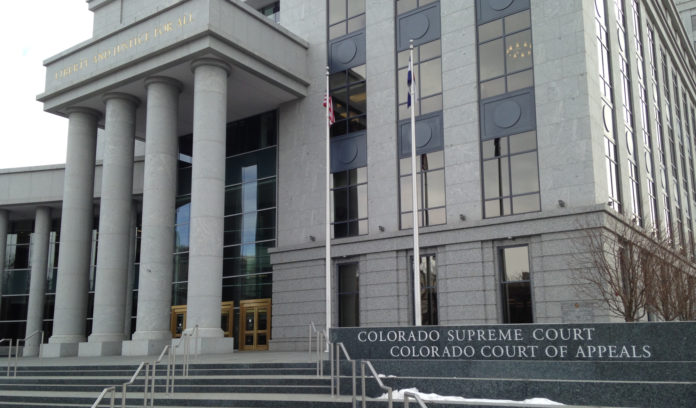
The Colorado Supreme Court on Feb. 7 reversed a man’s kidnapping conviction, finding a bad jury instruction — and bad grammar — undermined his right to due process and a jury trial.
Nicholas Garcia, Jr. and Daniel Kaehne began their night in Black Hawk and ended it in Denver. They don’t agree on what happened in between, except that during the early hours of April 1, Kaehne called 911 from a house in Denver claiming he had been abducted, robbed and assaulted by four men.
Garcia stood trial for second-degree kidnapping, robbery, third-degree assault and menacing. Following three hours of deliberation, the jury posed a question to the court: “What are the parameters of kidnapping? Is it considered kidnapping if a person is put back in a car? Is it kidnapping if they are dumped and left behind?”
The trial court responded that the phrase “seized and carried any person from one place to another,” which is an element of the crime of second-degree kidnapping, is defined as “any movement, however short in distance.” Garcia objected to the instruction, but the instruction was passed on to the jury and Garcia was convicted on all counts.
On appeal, Garcia argued the jury instruction was erroneous because it omitted two requirements of the crime of second-degree kidnapping: The defendant must seize the victim and the defendant must carry the victim “from one place to another.” A split panel of the Court of Appeals upheld Garcia’s kidnapping conviction.
In his appeal to the Colorado Supreme Court, Garcia argued that the trial court’s instruction allowed him to be convicted without having seized the victim, lowering the prosecution’s burden because it makes “any movement” of the victim kidnapping.
The high court was convinced. By omitting the idea of seizure, the jury instruction could lead a defendant to be convicted of kidnapping as long as they displaced another person without consent, “regardless of whether the defendant exercised or took control over that person,” states the unanimous opinion written by Justice Maria Berkenkotter. The erroneous instruction could have led a jury to convict Garcia of kidnapping even if it believed testimony suggesting that Kaehne went to Denver voluntarily but was later pushed or dumped from the car.
The Supreme Court also agreed with Garcia that the instruction was incorrect because it omitted the requirement that the victim be carried “from one place to another,” settling instead for “any movement” of the victim.
“Again, this case illustrates the point because the erroneous supplemental instruction would have allowed the jury to convict Garcia … simply because Kaehne somehow ‘moved, however short in distance’ from inside the car to the alley,” the opinion states. “That is not second degree kidnapping.”
The jury instruction was made worse by bad grammar, according to the justices. The trial court’s explanation of what the crime requires — “any movement, however short in distance” — lacks both a subject and an object, Berkenkotter noted, making it unclear who is seizing and carrying whom. “It also included no verbs, even though it purports to explain the meaning of two verbs,” she added. “The instruction was consequently misleading and confusing because, without a subject, object, or any verb, the jury may not have understood what actus reus was required.”
The problems with the jury instruction could have contributed to Garcia’s conviction, the court concluded, and the trial court violated his right to due process and a jury trial under the U.S. and Colorado constitutions.

